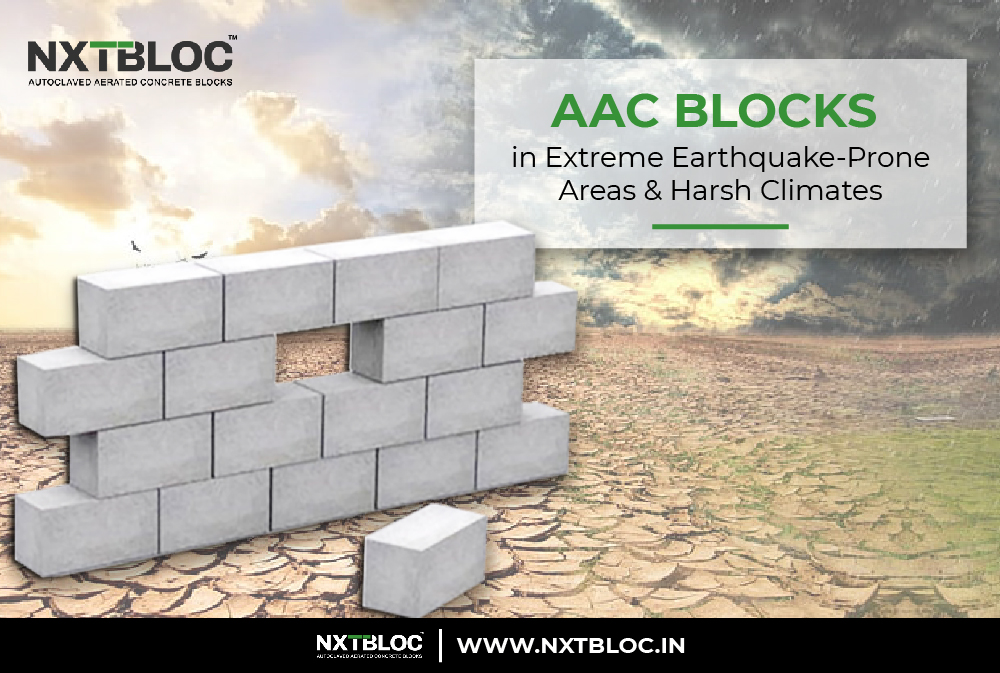Table of Contents
Introduction to AAC Blocks
When it comes to constructing buildings that can withstand the test of time and nature’s fury, AAC (Autoclaved Aerated Concrete) blocks have emerged as a game-changer in the construction industry. This article delves into the remarkable durability and resilience of AAC blocks, particularly in challenging environments such as earthquake-prone areas and regions with harsh climates.
The Science Behind AAC Blocks
Before we explore AAC blocks’ resilience, let’s grasp the science behind them. These blocks are created through a fascinating process that involves mixing sand, cement, lime, and aluminium powder, resulting in a chemical reaction that produces millions of tiny air bubbles. These bubbles give AAC blocks their lightweight and insulating properties, making them an ideal choice for various construction projects.
AAC Blocks in Earthquake-Prone Areas

1. Lightweight Advantage
One of the primary reasons AAC blocks excel in earthquake-prone regions is their lightweight nature. Traditional concrete blocks are heavy, which can lead to structural damage during seismic activity. In contrast, AAC blocks’ low density minimizes the stress on the building, reducing the risk of collapse.
2. Flexibility is Key
In earthquake-prone areas, buildings are subjected to lateral forces that require flexibility to dissipate energy. AAC blocks, with their porous structure and inherent flexibility, can absorb and disperse these forces effectively, reducing the likelihood of structural failure. This flexibility is a result of the air bubbles within the blocks, which act as built-in shock absorbers.
3. Interlocking Strength
AAC blocks are designed with interlocking features that enhance their overall strength. During an earthquake, these interlocking blocks provide additional stability, preventing the walls from separating or crumbling. This unique design attribute is a significant advantage in seismic zones.
Battling Extreme Climates

1. Thermal Insulation
Regions with harsh climates often experience extreme temperature variations. AAC blocks’ excellent thermal insulation properties help maintain a comfortable interior temperature. They prevent heat from penetrating during scorching summers and keep the warmth inside during frigid winters, reducing energy consumption and making them an eco-friendly choice.
2. Moisture Resistance
In areas with high humidity or heavy rainfall, traditional building materials can deteriorate over time. AAC blocks, however, are highly resistant to moisture and do not swell or warp when exposed to water. This resistance ensures the longevity of the structure and reduces maintenance costs.
3. Fire Resistance
Extreme climates can also lead to wildfires or accidental fires. AAC blocks have an impressive fire resistance rating, as they do not burn and can withstand high temperatures for an extended period. This fire-resistant property adds an extra layer of safety to buildings in areas prone to wildfires or other fire-related hazards.
Conclusion
AAC blocks have revolutionized construction practices by offering remarkable durability and resilience in challenging environments. Their lightweight nature, flexibility, and interlocking strength make them ideal for earthquake-prone regions. Furthermore, their thermal insulation, moisture resistance, and fire resistance qualities make them a go-to choice for structures in harsh climates. When considering reliable building materials for demanding conditions, AAC blocks stand out as a versatile and dependable option, ensuring both safety and sustainability in construction projects.
